Arthur N. Rupe Chair and Biennial Conference
The Arthur N. Rupe Chair in the Social Effects of Mass Communication
The Arthur N. Rupe Foundation is dedicated to achieving positive social changes by shining light on critical and controversial issues through the production and dissemination of scholarly studies, public forums, debates, documentary films, and other media. The Foundation endowed the Chair in the Department of Communication to conduct teaching, research, and the biennial Rupe Conference about social implications of mass and digital media. Ronald E. Rice has been the Rupe Chair since 2004.
Rupe Conferences (Every Other Year)
[click on link to go to that page section]
2023: Social Processes of Online Hate (with UCSB Center for Information Technology & Society)
2021: Communicating about COVID-19
2019: The Secret Lives of Plastic: Materials, Recycling, Oceans, & Communication
2017: Science, Communication and Uncertainty (Evening Presentation; Workshop)
2015: Sustainable Science Communication Conference
2011: Net Worth: Media Distribution in the Digital Era
2009: Media and the Presidential Election: Humor, Race, and Coverage
2007: Media and the Environment
2023: Social Processes of Online Hate Conference (with UCSB Center for Information Technology & Society)
(Click here to download the Conference program (.pdf))
Date and Location: Thursday May 11, 9-12, 2:00-5:45, UC Santa Barbara Mosher Alumni House, Alumni Hall (Download map)
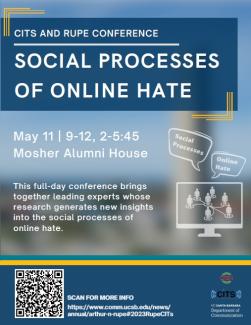
The expression of hate online—racism, sexism, religious bigotry, xenophobia, and other forms—is widely recognized as one of the biggest problems with social media. On May 11, 2023, UCSB will hold a full-day conference at Mosher Alumni Hall involving leading scholars whose work addresses a “social processes” approach to online hate. The event is sponsored by the Center for Information Technology and Society (Professor Joe Walther), the Arthur N. Rupe Chair in the Social Effects of Mass Media (Professor Ronald E. Rice), the UCSB Center for Black Studies Research, and other prospective supporters.
Background. Traditional perspectives on online hate tend to focus on the impacts on victims or the personality traits of senders. Although these approaches offer important contributions, they do not take into consideration the inherently social nature of social media, that is, the nature of social interactions online among those who produce hate messages.
Alternatively, exploring social process perspectives provides a more comprehensive understanding of the production of online hate in social media. A social process perspective assumes that patterns of interactive social behavior reinforce, magnify, or modify the expression of hate online. It also considers the characteristics of social media that facilitate social interactions that promote hate and facilitate relationships among haters.
Social Interactions. A social processes perspective assumes that communicative interaction among haters provides critical mechanisms that motivate, reinforce, and perpetuate online hate. Among its premises are the notion that online hate is socially organized, that is, that it may be planned, managed, enacted, and celebrated among “cliques” of antagonists. It considers whether like-minded haters become develop interpersonal bonds among themselves as they antagonize others. It assumes that the production of hate messages has an audience, but it raises the question whether the audience is not necessarily the ostensible victims of online hate messages, but rather, the “virtual community” of haters, themselves. It considers that hate is normalized and perpetuated through social support among haters.
Media Characteristics. A social process perspective of hate in social media also focuses on characteristics of media and the roles they play in the collaborative creation and dispersion of hateful messages. They simplify the ability to find, follow, and “friend” like-minded haters. Their recommendation systems steer individuals into dialogue in hate-oriented echo chambers. Social media provide relatively unique methods and symbolic behaviors that streamline the generation of affirmations and congratulations for one’s fellows’ hostility.
These and other new and provocative approaches to online hate have the potential to change our understanding of its production and its prevalence.
This full-day conference brings together leading experts whose research generates new insights into the social processes of online hate. Each participant will present their work in a half-hour session, followed by Q&A.
Presenters and Titles
The Conference begins at 9:00 am in Alumni Hall, Mosher Alumni House
(Click on names to go to photos, abstracts, and biographical summaries)
9:00-10:30
Ronald E. Rice (Distinguished Professor of Communication, UC Santa Barbara): “Welcome”
David Marshall (Executive Vice Chancellor, UC Santa Barbara): “Opening Comments”
1. Joseph B. Walther & Ronald E. Rice (UC Santa Barbara): “Making a Case for a Social Processes Approach to Online Hate”
2. Anton Törnberg (Senior Lecturer, Sociology, University of Gothenburg, Sweden): “From Echo Chambers to Digital Campfires: Constructing Intimate Community of Hate within Stormfront”
10:30-12:00
3. Walter DeKeseredy (Anna Deane Carlson Chair of Social Sciences; Director, Research Center on Violence; Department of Sociology and Anthropology, West Virginia University): “Digital Violence Against Women in the Incelosphere”
4. Sahana Udupa (Professor of Media Anthropology) and Oeendrila Lahiri (postdoctoral researcher in the online misogyny project, University of Munich [LMU], Germany): “‘Deal’ of the Day: Sex, Porn and Political Hate on a Telegram Channel”
2:00-3:30
5. Adam Burston (PhD Candidate in Sociology, UC Santa Barbara): “Digitally Mediated Spillover as a Catalyst of Radicalization: How Tech-Savvy Activists are Radicalizing Conservative Youth Movements from Within”
6. Stephen Rea (ADL Center) & Jordan Kraemer (Director of Policy and Research, ADL Center for Technology & Society): "Antisemitism across Platforms: Networked Online Hate on the Fringes and in the Mainstream"
3:30-5:00
7. Gianluca Stringhini (Assistant Professor of Electrical and Computer Engineering, Boston University): “Understanding the Phases of Coordinated Online Aggression Attacks”
8. Yotam Shmargad (Associate Professor of Government & Public Policy, University of Arizona), Kevin Coe (University of Utah), Kate Kenski, and Steve Rains (University of Arizona): “Operationalizing Discussion Norms in Large-Scale Social Platform Data”
5:00-5:45
9. Joseph B. Walther (UC Santa Barbara): "A Social Approval Theory of Online Hate"
10. Stephanie Tong (Associate Professor, Wayne State University): "Comments on Online Hate"
Note: Shruti Phadke (PhD Candidate in Computational Social Science, University of Washington), will not be able to attend, but will contribute her paper “A Socio-Technical Review of the Cross-Platform Expanse of Online Hate Movements” to the edited book from this conference.
Presenters, Titles, Abstracts, Photos, and Bios
Adam Burston, Department of Sociology, University of California, Santa Barbara: “Digitally Mediated Spillover as a Catalyst of Radicalization: How Tech-Savvy Activists are Radicalizing Conservative Youth Movements from Within”
Conservative youth organizations responded unevenly to the recent surge in right-wing extremist social movements. Some remained committed to moderate conservatism. Others became radicalized, embracing supremacist ideology and deploying anti-social messaging. Some suggest that members of the Alt-Right deliberately infiltrated conservative youth movements in order to radicalize their members; this position does not take into consideration the complexity of the radicalization process. A multi-site ethnography of a conservative student youth organization with chapters throughout the U.S. supports an alternative process, which I refer to as “digitally mediated spillover,” or a process in which activists who participated in one online social movement enter a new movement, bringing their ideology, tactical repertoires, culture, and social networks to share with others. Digitally mediated spillover occurred when conservative high-school students who had participated in online segments of Alt-Right and the Manosphere movements were later recruited by college campus-based, moderate conservative organizations. I explain how digitally mediated spillover leads to change in the organizations and makes them susceptible to radicalization, involving the sharing of threat construction and collective identity formation. Finally, I argue why digitally mediated spillover is the likely cause of the spread of radicalization in conservative youth organizations in the U.S.

Adam Burston is a Ph.D. candidate in Sociology at the University of California, Santa Barbara with an emphasis in Information, Technology, and Society. His work lies at the intersection of social movements, technology, and identity. His dissertation, “Radicalization vs. Resistance and Recommitment: Why Conservative Youth Accept or Reject Extremism” focuses on the strategies that right-wing student activists employ to radicalize their moderate peers as well as the ideological shifts in right-wing movements that enable formerly marginalized communities to participate. Before Adam came to UC Santa Barbara he was a research associate with Carnegie Mellon University’s Department of Engineering and Public Policy, and a volunteer crisis counselor with Pittsburgh Action Against Rape.
Walter S. DeKeseredy, Anna Deane Carlson Endowed Chair of Social Sciences, Director of the Research Center on Violence, and Professor of Sociology; West Virginia University: “Misogyny and Woman Abuse in the Manosphere: The Role of Incel Male Peer Support”
The word “incel” is short for “involuntary celibate,” and members of the incel movement are patriarchal men who assert that they cannot have sex with women but want to. An incel, according to Incels.Me, is a “person who is not in a relationship nor has had sex in a significant amount of time, despite numerous attempts.” Incels are also anti-feminist men who have sharp disdain for “Chads” and “Stacys.” Chads are, as Incel.Me defines them, “sexually satisfied men, charismatic, tall, good looking, confident, muscular,” and Stacys are attractive women who reject incels’ sexual advances. Further, a growing body of research reveals a strong association between digital and offline variants of violence against women and incel subcultural dynamics. Misogynistic incel ideologies are primarily expressed and normalized in online group environments with members of the incel subculture never coming into face-to-face contact with each other but frequently exchanging written, audio, and visual communication with their peers. The main objective of this paper is twofold: (1) to review the extant social scientific literature on the digital incel subculture (2) to suggest new empirical and theoretical areas of inquiry.

Walter S. DeKeseredy is Anna Deane Carlson Endowed Chair of Social Sciences, Director of the Research Center on Violence, and Professor of Sociology at West Virginia University. He is also Adjunct Professor in Monash University’s Gender and Family Violence Prevention Center. DeKeseredy has published 28 books, over 130 scientific journal articles and close to 120 scholarly book chapters on violence against women and other social problems. In 2008, the Institute on Violence, Abuse and Trauma gave him the Linda Saltzman Memorial Intimate Partner Violence Researcher Award. He also jointly received the 2004 Distinguished Scholar Award from the American Society of Criminology's (ASC) Division on Women and Crime and the 2007 inaugural UOIT Research Excellence Award. In 1995, he received the Critical Criminologist of the Year Award from the ASC’s Division on Critical Criminology & Social Justice (DCCSJ) and in 2008 the DCCSJ gave him the Lifetime Achievement Award. In 2014, he received the Critical Criminal Justice Scholar Award from the Academy of Criminal Justice Sciences' (ACJS) Section on Critical Criminal Justice and in 2015, he received the Career Achievement Award from the ASC's Division on Victimology (DOV). In 2017, he received the Impact Award from the ACJS’s section on Victimology and the Robert Jerin Book of the Year Award from the ASC’s Division on Victimology. In 2022, he was named an ASC Fellow, received the Praxis Award from the DCCSJ, and received the 2022 Robert Jerin Book Award from the ASC’s DOV.
Jordan Kraemer, Director of Policy and Research, ADL Center for Technology & Society: “Anti-Semitism across Platforms: Networked Online Hate on the Fringes and in the Mainstream”
Online hate and harassment is not limited by the boundaries of any one social media platform. Research has shown how hate narratives and harassment campaigns are often organized on one platform and deployed on another. Existing studies presume that such movements are unidirectional (i.e., from one platform to another), sequential, and explicitly coordinated. New research on online hate and harassment challenges this view. In this study, the authors investigate how sharing links to YouTube videos on so-called “alt-tech” platforms like Gab, Telegram, and 4chan affected activity on YouTube. In dozens of cases, there was a significant increase in toxic and antisemitic comments on the YouTube videos after their links had been shared elsewhere. Moreover, inbound activity did not target individuals or groups for harassment. Rather, commenters posting toxic and antisemitic content appeared to be forming bonds and reinforcing conspiratorial, bigoted world views common to their communities beyond YouTube. This research suggests that hate message producers post messages between platforms for their own consumption rather than as an attack on targets or victims. Based on these findings, we theorize that hate messengers exploit known differences in content moderation policies and practices on certain platforms by strategically offloading elements of conversations across media systems. The study offers contributions to the study of online conversations and virtual communities, and suggests a need for platforms to redesign systems to consider users’ cross-platform constellations of behaviors rather than strictly local, within-platform messaging.

Jordan Kraemer, PhD, is a media anthropologist with expertise studying digital platforms, social inequality, gender, and urban life. She currently directs research on hate and harassment online at ADL’s Center for Technology and Society. She is the author of a forthcoming book on social and mobile media among an emerging middle class in Berlin from Cornell University Press. Her work has also been published in Catalyst: Feminism, Theory, Technoscience; Global Perspectives; Anthropological Quarterly; and Fast Company, among others. Previously, she was an SSRC Just Tech grantee and a Mellon Postdoctoral Fellow at Wesleyan University, and taught feminist and queer technology studies at NYU Tandon School of Engineering. Jordan holds a Ph.D. in cultural anthropology from UC Irvine.
David Marshall, Executive Vice Chancellor, and Professor of English and Comparative Literature: "Opening Comments"

David Marshall is Executive Vice Chancellor of the University of California, Santa Barbara, and Professor of English and Comparative Literature. The office of the Executive Vice Chancellor has responsibility for all academic units, on and off-campus instructional activities, and instructional support programs. It maintains formal liaison with the Office of the President. The Executive Vice Chancellor is the chief academic officer of the University of California, Santa Barbara. His research focuses on eighteenth-century fiction, aesthetics, and moral philosophy. He is the author of numerous essays (on such authors as Homer, Shakespeare, Austen, Lennox, Mackenzie, Rousseau, Wordsworth, Hume, and Rilke, among others) and four books: The figure of theater: Shaftesbury, Defoe, Adam Smith and George Eliot (1986); The surprising effects of sympathy: Marivaux, Diderot, Rousseau, and Mary Shelley (1988); The frame of art: Fictions of aesthetic experience, 1750-1815 (2005), which was awarded the 2005-2006 Louis Gottschalk Prize by the American Society for Eighteenth-Century Studies; and forgetting fathers: Untold stories from an orphaned past. A former Guggenheim Fellow, he also has lectured widely and published on issues in higher education and public education.
Shruti Phadke, Ph.D. candidate at the Information School, University of Washington: “A Socio-Technical Review of the Cross-Platform Expanse of Online Hate Movements”
Communities of social media users employ online spaces to mobilize antagonistic movements such as the attack on the U.S. Capitol riot, or white nationalist and trans- or homophobic campaigns. The chapter summarizes scholarly studies illuminating how different technological affordances of media platforms, and the social processes they enable, facilitate the propagation of hateful and extremist narratives. Moreover, given the availability of multiple social media on the internet, looking at a single platform may limit the understanding of the web of hate and extremism online. Hence, this chapter also reviews studies examining how extremist movements spread across platforms. It offers future research directions for understanding extremist communities outside the West. In light of the changing landscape of social media, this chapter also considers ethical challenges associated with cross-platform research into hate and extremism.

Shruti Phadke is a Ph.D. candidate (ABD) at the University of Washington Information School. Her research focuses on computationally understanding participation, social knowledge construction, and resource mobilization in online communities of problematic information. Her research benefits from multiple methodological approaches ranging from statistics, causal machine learning, natural language processing, and qualitative methods. Her research has received two Best Paper Honorable Mention awards at CSCW and the Best Paper Award at ICWSM 2022.
Stephen C. Rea, Senior Researcher, ADL Center for Technology & Society: “Anti-Semitism across Platforms: Networked Online Hate on the Fringes and in the Mainstream”

(See entry for Jodan Kraemer for abstract.) Stephen C. Rea is a Senior Researcher at the Anti-Defamation League's Center for Technology & Society. A cultural anthropologist, Stephen's research expertise is in digital culture with a focus on trust and community. His projects have included multi-year ethnographic research on South Korean online gaming culture, digital consumer financial services in the global South and the United States credit union system, the social and legal implications of automated decision-making systems, fairness and ethics in crowd work labor markets, engineering ethics education, and online hate and harassment and digital extremism on social media. Stephen's work has been published in American Anthropologist, the Journal of the Royal Anthropological Institute, Signs and Society, and Law & Policy, among others. Prior to joining the ADL, he held appointments as a Visiting Assistant Professor at Bucknell University, a Lecturer at the University of California, San Diego, a Postdoctoral Scholar at the University of California, Irvine, and a Research Assistant Professor at Colorado School of Mines. Stephen received his Ph.D. in Anthropology from the University of California, Irvine in 2015.
Ronald E. Rice, the Arthur N. Rupe Chair in Social Effects of Mass Communication, Distinguished Professor of Communication at the University of California Santa Barbara, and Conference Co-organizer: “Making a Case for a Social Processes Approach to Online Hate”

(See entry for Joseph B. Walther for presentation abstract.) Ronald E. Rice has been an officer in both the International Communication Association and the Academy of Management, elected President (2006-2007) and Fellow (2010) of the International Communication Association (ICA). He was honored with the ICA Steven Chaffee Career Achievement Award (2015), a Fulbright Award to Finland (2006), and was the Wee Kim Wee and then University Professor of the School of Communication and Information at Nanyang Technological University in Singapore (2007-2010). He holds an Honorary Doctorate from the University of Montreal. He has conducted research and published widely in communication science, public communication campaigns, computer-mediated communication systems, research methodology, organizational and management theory, information systems, information science and bibliometrics, and social networks. His publications have won awards as best dissertation from the American Society for Information Science, 17 times as best paper from the International Communication Association, National Communication Association, Broadcast Education Association, Conference on Computer-Supported Collaborative Work, Academy of Management, and the Russian Communication Association, a book award from the Health Communication Division of ICA. He has co-authored or co-edited Public communication campaigns (1st ed: 1981, 2nd ed: 1989, 3rd ed: 2001, 4th ed: 2012, Sage), The New media: Communication, research and technology (1984, Sage), Managing organizational innovation (1987, Columbia University Press), Research methods and the new media (1988, The Free Press), The Internet and health communication (2001, Sage), Accessing and browsing information and communication (2001, MIT Press), Social consequences of Internet use: Access, involvement and interaction (2002, MIT Press), The Internet and health care: Theory, research and practice (2006, Erlbaum), Media ownership: Research and regulation (2008, Hampton Press), Organizations and unusual routines (2010, Cambridge University Press), and The Oxford handbook of digital technology and society (2020, Oxford University Press).
Yotam Shmargad, Associate Professor of Government & Public Policy, University of Arizona; Kevin Coe, Professor of Communication, University of Utah; Kate Kenski and Steve Rains, Professors of Communication, University of Arizona: “Operationalizing Discussion Norms in Large-Scale Social Platform Data”
The internet has brought with it a new lens for enriching our understanding of human behavior, the so-called ‘digital traces’ that arise from posting, liking, sharing, and other actions that people perform while using the web. Digital traces differ qualitatively from the instruments that scholars typically use to study human behavior, such as interviews and surveys, in that they are relational, reflecting specifically what people do while in the presence of others. Furthermore, digital traces uniquely capture the temporal nature of behavior at a level of granularity that is impossible to achieve with traditional social scientific instruments. In this paper, we discuss how these two features of digital trace data, relationality and temporality, make them uniquely fit for the study of social norms – the implicit rules that guide behavioral compliance and deviance. We describe how scholars have traditionally measured people’s normative environments, limitations of these approaches, and how digital traces can help overcome gaps in our knowledge about normative behavior. Finally, we elaborate on how a normative approach can be used to shed light on issues that currently plague online discussion spaces, namely incivility and political trolling. Our paper develops a general framework for adapting and extending theories of normative behavior to study the fast-paced and socially-rich virtual worlds in which we find ourselves.

Yotam Shmargad is an Associate Professor in the School of Government & Public Policy at the University of Arizona. His research focuses on understanding how digital platforms shape social and political life in the United States. He uses a mix of statistical and computational techniques, including social network analysis, online data collection, virtual experimentation, machine learning, and econometric methods. His research speaks to questions about how social media dampen certain disparities while magnifying others, and how social media can both fuel political polarization and incivility as well as extinguish their flames. Shmargad’s work has appeared in the Journal of Politics, Political Communication, the Journal of Information Policy, the Journal of Political Marketing, the Journal of Interactive Marketing, PLOS One, Social Science Computer Review, and the Journal of the Association for Information Science and Technology, among other venues.
Kevin Coe is a Professor in the Department of Communication at the University of Utah. Professor Coe’s research employs both quantitative and qualitative methods to better understand political communication, news media, and public opinion. He is the coauthor of two books, The ubiquitous Presidency: Presidential communication and digital democracy in tumultuous times (Oxford, 2021, with Joshua Scacco) and The God strategy: How religion became a political weapon in America (Oxford, 2010, with David Domke), as well as numerous research articles. Professor Coe teaches courses on media, strategic communication, political communication, and content analysis. He is from Tacoma, Washington, and is a product of the Tacoma Public Schools.
Kate Kenski is a Professor in the Department of Communication and School of Government & Public Policy where she teaches political communication, public opinion, and research methods. Prior to teaching at the University of Arizona, she was a senior analyst at the Annenberg Public Policy Center at the University of Pennsylvania. She is co-author of The Obama victory: How media, money, and message shaped the 2008 election (2010, Oxford University Press) and Capturing campaign dynamics: The National Annenberg election survey (2004, Oxford University Press). She is co-editor of The Oxford handbook of political communication with Kathleen Hall Jamieson. Dr. Kenski has published over 70 book chapters, articles, and research notes in publications such as the American Behavioral Scientist, Communication Research, Human Communication Research, the International Journal of Public Opinion Research, the Journal of Applied Social Psychology, and Public Opinion Quarterly. Her current research focuses on social media and incivility, gender and politics, and presidential campaigns. She is the vice chair of the International Communication Association’s Political Communication Division.
Steve Rains is Professor of Communication at the University of Arizona. His research is situated in the areas of health communication, social influence, and communication and technology. He is interested in better understanding how and why messages influence people, particularly in health contexts and when using communication technologies. His work in recent years has primarily focused on social support, though he routinely studies digital coping, incivility, persuasion resistance, and related topics. He is especially interested in leveraging computational social science techniques to explore the dynamic communication processes involved in these phenomena.
Gianluca Stringhini, Assistant Professor of Electrical and Computer Engineering, Boston University: “Understanding the Phases of Coordinated Online Aggression Attacks”
Several polarized online communities have emerged, often serving as a coordination point for like-minded individuals to launch attacks against users on other platforms like Twitter and YouTube. In this paper, we will summarize our seven year research on studying coordinated harassment originating from polarized online communities, developing a taxonomy of the phases that these attacks go through. By applying this taxonomy to data from 4chan and other polarized communities, we find that aggressors use a variety of tactics, some expected and some not. For example, when looking at the phenomenon of Zoombombing, we find that they are crimes of opportunity as opposed to elaborately planned events. At the same time, we have also discovered much more coordinated “operations” that are developed and planned over longer stretches of time. Often, aggressors make comment threads to entice engagement from others. These threads are also used to report back on the attack, pile on the victim, and ultimately congratulate each other for a successful attack. Our findings suggest that while understanding the nature of attacks and their victims is valuable, it is not enough. Aggressors as a group are much more complex than just the fruit of their labors, and we have only begun to scratch the surface with respect to truly understanding (harmful) interactions on social media.

Gianluca Stringhini is an Assistant Professor in the Electrical and Computer Engineering Department at Boston University, holding affiliate appointments in the Computer Science Department, in the Faculty of Computing and Data Sciences, in the BU Center for Antiracist Research, and in the Center for Emerging Infectious Diseases Policy & Research. In his research Gianluca applies a data-driven approach to better understand malicious activity on the Internet. Through the collection and analysis of large-scale datasets, he develops novel and robust mitigation techniques to make the Internet a safer place. His research involves a mix of quantitative analysis, (some) qualitative analysis, machine learning, crime science, and systems design. Over the years, Gianluca has worked on understanding and mitigating malicious activities like malware, online fraud, influence operations, and coordinated online harassment. He received multiple prizes including an NSF CAREER Award in 2020, and his research won multiple Best Paper Awards. Gianluca has published over 100 peer reviewed papers including several in top computer security conferences like IEEE Security and Privacy, CCS, NDSS, and USENIX Security, as well as top measurement, HCI, and Web conferences such as IMC, ICWSM, CHI, CSCW, and WWW.

Stephanie Tong (Associate Professor, Wayne State University): "Comments on Online Hate"
This work provides a broad overview of the nature of online hate and what research reveals about it. Consideration includes the prevalence, content, and nature of hate messaging in various forms of social media. It also focuses on the victimization of hate messaging and its effects on readers who identify as targets of online hate.
Stephanie Tong is an associate professor in the Communication Department at Wayne State University. She is the Director of the Social Media and Relational Technologies (SMART; (http://www.smartlabswayne.com/) Labs, which investigates how technology affects the ways people communicate across a variety of contexts including: romance, families, friendships, personal health, and online hate. Her work has been supported by the National Science Foundation, the National Communication Association, and the Central States Communication Association.
Anton Törnberg, Associate Professor of Sociology and Work Science, University of Gothenburg, Sweden: “From Echo Chambers to Digital Campfires: Constructing Intimate Community of Hate within Stormfront”
Digital media have been implicated in the significant increase in far-right extremism and violence in recent years, with suggestions that the formation of "echo chambers" drive polarization. This argument posits that repeated exposure to one-sided content leads to isolation. Individuals fall into online "rabbit holes" and emerge as "lone-wolf" terrorists. However, this chapter proposes a different process of online radicalization. Using Stormfront as an empirical case, it develops a social theory of how digital media nurture the social processes through which movements emerge and are perpetuated. Digital spaces facilitate identity work that allows individuals to become a movement by negotiating a common sense of "we"--a collective identity–and a shared worldview. Online communities are spaces for social processes involving collective emotional processes (articulation and verbalization that transform emotions and collectively deal with traumas) and discursive experimentation (providing the growth of fringe worldviews and conspiracy theories) that emerge through interaction. In this way echo chambers shape communities with a shared sense of self, unique worldviews, and heightened emotional energy. Thus, online communities such as Stormfront should be seen as a type of “digital campfires,” where individuals tell stories and draw from shared experiences and interests to establish a sense of community and shared identity and construction of a sense of intimacy within an unseen collective.

Anton Törnberg is Associate Professor at the Department of Sociology and Work Science at the University of Gothenburg, Sweden. His research chiefly focuses on the radical right movement online, particularly radicalization processes and violent extremism, by combining computational methods with qualitative approaches. He is currently involved in a research project that addresses the far right online and the interplay between online discourses and offline action.
Sahana Udupa, Professor of Media Anthropology, and Oeendrila Lahiri, postdoctoral researcher in the online misogyny project, University of Munich (LMU), Germany: “‘Deal’ of the Day: Sex, Porn and Political Hate on a Telegram Channel”
In 2021, a scandal erupted in India, when an obscure practice of “auctioning” politically vocal women on online platforms caught the attention of the mainstream media. It stirred a nation-wide media debate around groups of tech savvy teenagers from the majority Hindu community and their digitally native practice of using non-consensually sourced images and videos of women, especially Muslim women, to parade them on online platforms as ‘items on auction’. Thick with sexual signaling and “pornification” (Barton 2021; Sarracino & Scott 2008), online auctions sought to perform a politics of masculine majoritarianism by peddling objectified female bodies of the minority community as online artefacts, without the knowledge or consent of the women. Following a ban on YouTube channels that featured the auctions, the creators reassembled on a Telegram channel featuring an archive of banned videos, new videos, and interactive messaging, with Islamophobic content with graphic sexual “humor.” In this paper, we navigate this corpus of volatile and provocative content, to explore new social dynamics of hateful cultures emerging at the intersection of gender, religion and platform affordance. We combine content analysis of Telegram posts and ethnographic interviews with women political actors who were affected by the auction in several ways, to ask how online actors who espouse extreme forms of religious majoritarian ideologies distinguish themselves from other “moderates,” exhibit their masculine politics vis-à-vis the Muslim male “rivals” through a rather contrived way of sexualizing Muslim women, and participate in homosocial networks in which porn, sexual innuendo, political message and career advice co-mingle. Such grave practices are shaped by digital environments which are experienced and articulated as “fun” through the specific affordances and playful interactional frames of online media (Udupa 2019).
- Barton, Bernadette. (2021). The pornification of America: How raunch culture is ruining our society. New York University Press.
- Sarracino, C., and Scott, K. M. (2008). The porning of America: The rise of porn culture, what it means, and where we go from here. Beacon Press.
- Udupa, S. (2019). Nationalism in the digital age: Fun as a metapractice of extreme speech. International Journal of Communication, 13, 3143–3163.

Sahana Udupa is Professor of Media Anthropology at the University of Munich (LMU), Germany, where she directs the research program, For Digital Dignity. She is the author of Making news in global India (Cambridge University Press), Digital unsettling: Decoloniality and dispossession in the age of social media (New York University Press, with E.G. Dattatreyan) and co-editor of Digital hate: The global conjuncture of extreme speech (Indiana University Press) and Media as politics in South Asia (Routledge). She is the recipient of Joan Shorenstein Fellowship at Harvard University, Francqui Chair in Belgium and European Research Council grant awards.
Oeendrila Lahiri is postdoctoral researcher in the online misogyny project funded by the Bavarian Institute for Digital Transformation (BIDT) at the University of Munich (LMU), Germany. Her research focus is feminist resistance and religious nationalism in the digital space. Her training is interdisciplinary, with a focus on colonial and postcolonial studies.
Joseph B. Walther, Bertelsen Presidential Chair of Technology and Society, Distinguished Professor of Communication at the University of California, Santa Barbara, and Conference Co-organizer: “Making a Case for a Social Processes Approach to Online Hate”
Why do people express hate online so frequently? This essay briefly describes the most common individually-oriented and group-based explanations for the expression and propagation of hate messages in social media. It then introduces a different approach that focuses on the social factors and communicative interactions among those who generate hate online. It defines a social factors approach to hate on the basis of the social motivations and gratifications that lead to coordination and collaboration among its producers. It offers anecdotal evidence to support a novel theory that contends that online hate is generated for the enjoyment of like-minded actors, to garner attention and approval within their networks. It also reviews the few experimental and AI-oriented approaches that support this contention. The essay discusses implications for future research from a social processes perspective, provides a gateway to the variety of social approaches in the rest of these chapters, and speculates on the long-term impact of hate messaging in social media on desensitization, the magnification of prejudice, and the potential dangers to society they portend.

Joseph B. Walther holds the Bertelsen Presidential Chair in Technology and Society at the University of California, Santa Barbara, where he is a Distinguished Professor of Communication, and Director of the Center for Information Technology and Society. A Fulbright Scholar, Fellow of the International Communication Association, and Distinguished Scholar in the National Communication Association, he is one of the leading theorists in the area of computer-mediated communication, along with numerous behavioral science studies to his credit. His research focuses on the impact of interpersonal and intergroup dynamics in the attitudes and behaviors people develop via mediated interaction, in personal relationships, groups, and inter-ethnic conflict, and the reduction of prejudice. Prior to his position at UC Santa Barbara he has held regular or visiting faculty positions at several prestigious universities in the USA, Europe, and Asia, in the fields of Communication, Social Psychology, Education, and Information Science. Prof. Walther was recognized with Charles Woolbert Awards from the National Communication Association, on two occasions, for articles that have led to reconceptualizations of communication phenomena and have stood the test of time.
|
Joseph B. Walther, PhD |
Ronald E. Rice, PhD |

2021: Communicating about COVID-19
The theme of the 2021 Rupe Biennual Conference is Communicating about COVID-19. The COVID pandemic has become a devastating global phenomenon. The virus and its associated effects have killed millions of people and damaged the health and capabilities of countless more survivors for both the short and long term. Every aspect of life has been upended, from agriculture to zoos, science to religion, individuals to international, or eating to socializing. Nearly all professions and academic disciplines have been devoting extraordinary efforts to managing, studying, preparing for, responding to, and publishing or posting about this threat.
Thus the pandemic has heightened our need to understand (among many other things) how all aspects of life are interconnected. COVID-19 is a contagious disease – spread through interactions, direct or indirect, known or unknown. So one of the many lenses we may apply to understand the nature, meaning, and consequences of this crisis is through communication. Yet even this particular lens is more of a prism, revealing a broad spectrum of communicative processes associated with the disease and its implications. This brief conference can only cover a few of those processes.
We are very fortunate to have an outstanding group of communication researchers and practitioners participate in the conference. The first session provides strategic public health and institutional perspectives. The next four sessions move through central areas of communication research and practice. The second considers several interpersonal implications, including mediated, romantic, and even rejected relationships. The third session considers message aspects of communicating about COVID-19, such as through masks, cultural values, and blame. The fourth focuses on media, from how individuals and nonprofit organizations use media to respond to the crisis, to how the language of online news coverage varies by regional factors. The fifth and final session looks at how media professionals report on the topic, what happens to the meaning of work when professions are suddenly categorized by health policies as essential or not, and how organizations communicate internally with their employees.
This free public Zoom Webinar had 5 sessions, from 11am to 6:15pm, in 75 minutes sessions with 15 minute breaks, on Thursday May 6. Each session offered about 20 minutes for each of three presenters, and about 10 minutes for discussion and Q&A. Each session was recorded, and available on the Department of Communication YouTube Channel via links just below. After pressing the Start arrow, click on the full screen icon at the bottom right of the video window. The beginning screen lists the titles and presenters for that session. The program, and the presenters' bios, photos, and abstracts follow. In these extremely unfortunate and challenging times, we hope that the Rupe Conference on Communicating about COVID-19 provides a bit of understanding and insight.
Session 1: Public Health Communication - Watch on YouTube
Session 2: Interpersonal - Watch on YouTube
Session 3: Messages - Watch on YouTube
Session 4: Media - Watch on YouTube
Session 5: Organizations - Watch on YouTube
Program (click here to download a .pdf)
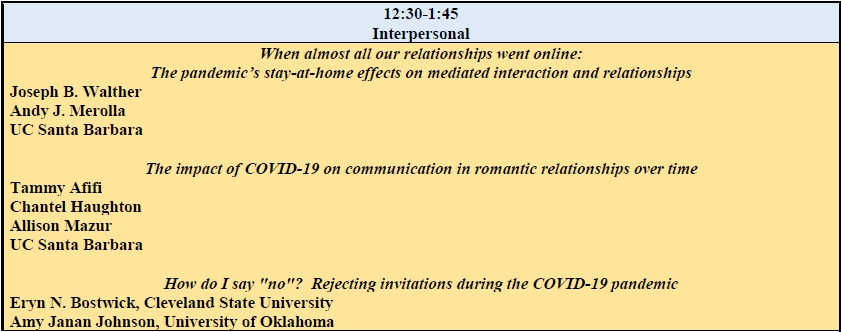
Abstracts, Biographical Statements, and Photos (click here to download a .pdf)
|
11:00-12:15 Welcome, Introductions, and Public Communication |
|
Introduction to the Rupe Conference Image

Ronald E. Rice (Ph.D. & M.A., Stanford University) is the Arthur N. Rupe Chair in the Social Effects of Mass Communication in the Department of Communication at the University of California, Santa Barbara. His research interests include environmental communication, public communication campaigns, methodology, organizational and management theory, information science and bibliometrics, social uses and effects of new media and information systems, and social networks.
Image

Co-host/Conference Assistant: Gavin L. Kirkwood (M.A, Western Kentucky University) is a PhD candidate in the Department of Communication at University of California, Santa Barbara. His research centers on the social impacts of emerging technologies including algorithmic managers, AI-enabled facial recognition, and exoskeletons. Gavin has taught a variety of classes including small group communication, communication theory, and research methods. His work can be found in publications including Frontiers in Psychology and Communication Studies. |
|
Welcome and introductions Image
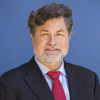
Charles R. Hale (B.A. Social Studies, Harvard University; Ph.D. Anthropology, Stanford University) is the SAGE Sara Miller McCune Dean of Social Sciences as well as a professor in the Department of Anthropology and the Department of Global Studies. He is a leading social science scholar whose research bridges multiple disciplines, with a focus on race and ethnicity, racism, social movements and identity politics among Black and indigenous peoples in Latin America and the Caribbean. He is highly regarded for his innovations in collaborative approaches, which characterize not only his research and teaching, but his administrative leadership as well. Hale, who previously taught at the University of Texas, Austin, is the recipient of a Fulbright Fellowship for research and teaching in Oaxaca, Mexico. |
|
Keynote presentation: Strategic public health communication about COVID-19 The Santa Barbara County Public Health Department has implemented communication strategies from the onset of the first case to engage the community in COVID-19 response efforts. The comprehensive strategies have provided timely information, promoted collaboration, built partnerships, initiated positive change, supported health equity, and fostered resiliency in our community. Image

Van Do-Reynoso (B.A., UC Santa Cruz; M.PH, UC Berkeley; Ph.D., UC Merced) is Director of the Public Health Department of the County of Santa Barbara. Before coming to Santa Barbara, she worked with public health departments in Tulare County Health and Human Services Agency and in Madera Country. Her office works with Emergency Operations Center, the Office of Emergency Management, the County Fire Department, and the Sheriff’s Office, among other units, in responding to the COVID-19 pandemic. The department’s responsibilities include inspecting food establishments, operating health clinics for the underserved, staffing medical shelters during emergency evacuations, managing the county’s animal control program, and conducting health education campaigns, among others. |
|
The role of communications in policy-setting during a crisis for consensus-driven decision-making organizations Universities and other consensus driven decision-making organizations present unique communications challenges. Even under the best of circumstances, these large legacy institutions are often driven by slow, bureaucratic processes more adapted to thoroughness than urgency. Crisis events, in which audiences demand immediate, clear, and decisive actions, strain this model. In a world in which social media sets the expectations for the timeliness of reactions, and in which being late is often judged more harshly than being wrong, communications offices must often work to proactively catalyze the decision-making process to ensure swift and appropriate action, as well as communication with stakeholders. Image

John Longbrake served as the Assistant Vice President for Communications at Harvard University before being appointed the Associate Vice Chancellor for Public Affairs and Communications at UC Santa Barbara in 2012. He left UCSB to become the Vice President for Communications at the University of Chicago from 2015 to 2017 where he was responsible for leading the development of strategic communications and marketing in support of academic programs, university initiatives, and institutional priorities. In 2017, Mr. Longbrake returned to UC Santa Barbara as Associate Vice Chancellor for External Relations. He is currently responsible for coordinating the communications and marketing efforts across the university, and oversees government and community relations efforts as well as the Office of Event Management and Protocol, Alumni Relations, and the UC Santa Barbara Foundation. Mr. Longbrake also spent almost a decade in Washington, DC, working in various policy and communications roles including appointments with the US Congress, the Treasury Department, and a Presidential Advisory Committee. |
|
12:30-1:45 Interpersonal |
|
When almost all our relationships went online: The pandemic’s stay-at-home effects on mediated interaction and relationships One implication of the pandemic’s stay-at-home orders was the sudden migration of all relationships (other than same-household relations) to one or another form of computer-mediated communication (CMC). Theories of CMC present competing hypotheses for potential effects on relational outcomes from different media under various circumstances. A survey conducted in June 2020 examined interactive media use by university students (N = 200) in Irvine, Santa Barbara, and Davis, CA, and Seattle, WA, who faced similar stay-at-home orders and academic term timing. Results present the associations of videoconferencing, voice-calling, emailing, texting, photo-sharing, and social media use with satisfaction and relational closeness among students with their romantic partners, best friends, family members, and professors. Image

Joseph B. Walther (Ph.D. Communication, University of Arizona) is a Distinguished Professor in Communication, the Mark and Susan Bertelsen Presidential Chair in Technology and Society, and the Director of the Center for Information Technology and Society at UC Santa Barbara. His teaching and research focus on computer-mediated communication and social media in personal relationships, groups, educational settings, and inter-ethnic conflict, topics on which he has contributed several original theories and numerous experiments and surveys. Prior to joining UCSB, Prof Walther was the Wee Kim Wee Professor in Communication Studies at Nanyang Technological University, Singapore; and previously at Michigan State University, Cornell, RPI, and Northwestern. He is a fellow at the Amsterdam School of Communication Research (ASCoR), where he was a Fulbright Scholar, a Fellow of the International Communication Association (ICA), and a Distinguished Scholar in the National Communication Association (NCA). Image
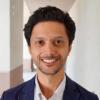
Andy Merolla is an Associate Professor in the Department of Communication, UC Santa Barbara. He studies the link between interpersonal communication and well-being. Andy’s research examines topics such as conflict management, interpersonal forgiveness, relational maintenance, and individuals’ experiences following natural disasters. Some of his recent research explores the role of communication in constructing hope and the important role that hope plays in managing difficult situations. Using approaches such as experience sampling, his current research is also analyzing the interrelationships between communication, emotion, and cognition in everyday interaction within social networks, or "social biomes." At UCSB, Andy teaches undergraduate and graduate courses in communication theory, conflict management, interpersonal communication, and nonverbal communication. |
|
The impact of COVID-19 on communication in romantic relationships over time We will discuss some of the latest research on the impact of the pandemic on romantic relationships and mental health. We will also talk about a four-wave panel study we conducted from March-May 2020 with 3400 married individuals in the United States. Recent analyses examined the impact of COVID-related negative events on individuals' corumination (or continuous, depressive talk) with their spouse and how this simultaneously made them feel more unified against the pandemic but hurt their mental health by increasing their stress. We also investigated whether these results depended upon race, gender, and the level of emotional support provided by their spouse. Image
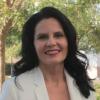
Tamara Afifi is a Professor in the Department of Communication at the University of California-Santa Barbara. Her research focuses on family and interpersonal communication in two domains: (1) how people communicate when they are stressed and its impact on personal and relational health, and (2) information regulation (e.g., avoidance, privacy, secrets, stress contagion effects). In particular, she examines the theoretical properties of family members’ communication patterns (e.g., conflict, social support, avoidance, verbal rumination, communal coping) across a variety of stressful situations, to explain and predict biological stress responses, resilience/thriving, and personal/relational health. Much of her current research involves testing her new theory called the Theory of Resilience and Relational Load, which brings together multiple, cross disciplinary bodies of literature on stress and relational resilience. Other research focuses on the theoretical properties and functionality of communal coping, the impact of divorce on children, and investigating how and why people manage their private information and its impact on health. Her work often includes community-based populations that are difficult to access (e.g., undocumented immigrants, refugees, residents with Alzheimer’s, families with chronic illnesses). Image
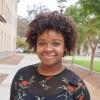
Chantel Haughton (B.A., University of Iowa; M.A., UC Santa Barbara) is a doctoral student in the Department of Communication at UCSB. Chantel’s research focuses on the intersection of racial and ethnic stigma, chronic stress, mental health, and communication. More specifically, she aims to understand how culture impacts communication and the ways minority families can foster resilience. She is working to expand the literature regarding people of color, as their experiences have traditionally been devalued in academia. Image
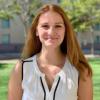
Allison Mazur (B.A. & M.A. Communication, Michigan State University) is a Ph.D. student in the Department of Communication at UCSB. Allison’s focus area is interpersonal communication with research interests in gender-based violence and how interpersonal relations can play a role in preventing sexual violence and supporting those who have experienced it. |
|
How do I say "no"? Rejecting invitations during the COVID-19 pandemic The worldwide outbreak of COVID-19 in early 2020, and restrictions put in place to limit social gatherings, was a stressful event. Given the importance of avoiding contact with others, for slowing the spread of the virus, having conversations with loved ones about comfort levels and the risk involved with certain activities is extremely important. Viewed through the lens of “difficult conversations”, we examined whether the perceived riskiness of the activity, the closeness of their relationship type (family romantic, or friends), and their location in the US (California, Oklahoma, or Ohio) affected their comfort with giving reasons for turning down an invitation and their anticipation of the effect for their future interactions. States varied widely in their response to the pandemic and our results suggest this affected participants’ responses to the activity scenarios we presented. People from Ohio and California reported less likelihood of attending the event in the high risk condition than people from Oklahoma. Participants were more likely to make up false excuses for low-risk events to avoid conflict. A three-way interaction between riskiness of the scenario, closeness of the relationship type, and location affected the effect on future interactions. Implications for the effects of difficult conversation on relationships are discussed. Image

Eryn N. Bostwick (Ph.D.) is an Assistant College Lecturer at Cleveland State University. Her research interests focus on the implications of harmful communication processes within interpersonal relationships. For example, her published scholarship includes exploring reasons why people keep secrets from their parents, the influence of trait aggressiveness during conflict, and family conflict surrounding the 2016 US presidential election. Her work has been published in such journals as the Journal of Social and Personal Relationships and the Journal of Family Communication. Image

Amy Johnson (Ph.D., Michigan State University) is a Professor in the Department of Communication, University of Oklahoma. She has also served as Graduate Liaison for the department. Her area is interpersonal communication. Her research interests include long-distance relationships and computer-mediated communication, friendships, stepfamilies, and interpersonal argument. She has published in such venues as Communication Monographs, Journal of Communication, Journal of Social and Personal Relationships, and Personal Relationships. Image

Norah Dunbar is a Professor of Communication, and current Department Chair, at UC Santa Barbara. She teaches courses in nonverbal and interpersonal communication, communication theory, and deception detection. She is also Affiliate Faculty in the Center for Information, Technology & Society; the Center for Digital Games Research; and the Quantitative Methods in the Social Sciences program. She has received over $13 Million in research funding from agencies such as the Intelligence Advanced Research Projects Activity, the National Science Foundation, the Department of Defense, and the Center for Identification Technology Research. She has published over 65 peer-reviewed journal articles and book chapters and has presented over 100 papers at National and International conferences. Her research has appeared in top journals in her discipline including Communication Research, Communication Monographs, and Journal of Computer-Mediated Communication as well as interdisciplinary journals such as Journal of Management Information Systems and Computers in Human Behavior. She has served on the editorial board of over a dozen disciplinary journals and as the Chair of the Nonverbal Division of the National Communication Association in 2014-2016. |
|
2:00-3:15 Messages |
|
Behind the mask: A moral foundations theory perspective Based on moral foundations theory (MFT; Haidt & Joseph, 2004), we examined reasons people report for wearing or not-wearing protective masks. Study 1 was conducted in July 2020 and Study 2 in early October, right after President Trump tested positive for COVID-19. Both studies found different ideological beliefs and moral foundational (MF) concerns to be instrumental in motivating decisions to wear or not-wear masks, with a shift in certain attitudes and beliefs following Trump’s infection. For reasons to wear masks, conservatives, moderates, and liberals each used a mix of individualizing (care, fairness) and binding (ingroup, authority, and purity) MFs with certain characteristic differences, particularly regarding reasons to not-wear masks among conservatives. Across both studies, President Trump’s perceived authority was associated with conservatives’ decisions based on binding MFs, but not with liberals’ or moderates’, which were based more on individualizing MFs. Our findings indicate the reasons for wearing or not wearing masks during the pandemic are ideologically charged such that people with differing ideologies base their choices on different moral foundations, for which the acts of wearing or not-wearing masks appear to have ideologically symbolic significance. Image
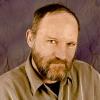
Claude Miller (M.A. Film and Video, American University; Ph.D. Communication, University of Arizona) is Professor and Director of Graduate Studies in the Department of Communication at the University of Oklahoma. He has published in the areas of persuasion, social influence, emotion, motivation, disaster preparedness, and health communication, and currently serves on the editorial boards of Human Communication Research, Health Communication, Social Influence, and Communication Monographs. His work investigates human affective responses to influences messages in various contexts applying psychological reactance, vested interest, and terror management theories to health promotion and risk prevention message design and crisis and disaster-related communication. Image

Haijing Ma is a fourth-year Ph. D. candidate in the Department of Communication at the University of Oklahoma. Her research interests are health communication and social influence. She is interested in the emotional and cognitive processing of messages dealing with health-relevant issues and risks (e.g., COVID-19, vaccination, obesity, tornado, climate change, etc.). She has published in the areas of health communication and social psychology. She currently serves as a reviewer for a peer-reviewed journal and national, international conferences. Image

Yifeng Wang is a Doctoral student in the Department of Communication at the University of Oklahoma. Her area of research interest is in intercultural and interpersonal communication. She currently serves as a reviewer for the International Communication Association conference.
Image

Doris Acheme is a Doctoral student in the Department of Communication at the University of Oklahoma. Her area of research interest is in intercultural and intergroup communication. Specifically, she investigates the role of identity and psycho-social responses in intergroup and intercultural communication. She currently serves as a reviewer for the International Communication Association conference. |
|
Coping with pathogens: The influence of collectivism on self and group protective responses Threats from contagious diseases naturally increase people’s motivation to protect themselves. Individuals, however, vary in how they try to protect themselves and their groups. In the present research, we investigate whether the cultural value of collectivism plays a role in shaping how individuals respond to threats of diseases, using national and international datasets collected during the scares of Ebola in 2014 and COVID-19 in 2020. We focus on two types of disease responses: xenophobia (e.g., prejudice) and compliance with community protective recommendations (e.g., opting in for digital contact tracing). The results show that collectivism reduces xenophobic reactions to perceived threat and increases compliance. This research also identifies psychological mechanisms (e.g., trust in institutions and perceiving greater social consensus) for the role of collectivism. Image

Heejung Kim (B.A. Psychology, University of Southern California; M.A., Ph.D. Social Psychology, Stanford University) is a Professor in the Department of Psychological and Brain Sciences, UC Santa Barbara. She is primarily interested in cultural psychology, looking at how culture influences psychological processes to understand why and how people engage in a range of everyday behaviors, such as pro-environmental actions, social support use, and consumer decision making. Her research has been funded by multiple grants from the National Science Foundation. She has served as an editor for Personality & Social Psychology Bulletin, Journal of Personality & Social Psychology, and Personality & Social Psychology Review. |
|
Message designs for the COVID-19 pandemic: Who to blame? This research compared people’s responses to two different messaging approaches: one assigning blame to human agency for the pandemic, and a second assigning blame to the novel coronavirus itself. In both approaches, official recommendations to contain the virus were included with reference to either human or virus agency. Our results found participants to be more defensive, angrier, and hostile toward the message source in response to virus agency, with more negative thoughts about the message, and greater likelihood to support opposing arguments. In contrast, receivers responding to messages assigning blame to human agency were more receptive to the message and expressed a greater willingness to adopt official recommendations for combating COVID-19. These findings offer important, practical considerations for health campaigns seeking to quell the pandemic. Haijing Ma and Claude Miller (see bio statements and photos above) |
|
3:30-4:45 Media |
|
Coping with COVID-19: The role of media in reducing stress and enhancing well-being in the early stages of the COVID-19 pandemic In face of the community shut-downs at the onset of the COVID-19 pandemic, US adults turned to media at unprecedented rates. Yet little research has addressed how media is effectively used to address life stressors. We report on two datasets – one cross-sectional (March 2020) and the other longitudinal (April-May 2020) – of US adults to assess how stress impacted media selection and how those choices influenced coping with the COVID-19 crisis. Image
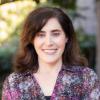
Robin Nabi is a Professor of Communication at UC Santa Barbara. Her research focuses on the role of emotion in media processes and effects, with particular emphasis on the persuasive effect of emotion-based messages and the use of media for coping with stress. She has served as a managing editor of Media Psychology, as associate editor of the Journal of Communication, and on the editorial board of numerous top communication journals. She is a past chair of the Mass Communication Division of the International Communication Association as well as the Communication and Social Cognition Division of the National Communication Association, and she is the current Chair of the ICA Publications Committee. She is a recipient of the 2018 Innovation in Theory Award from the Mass Communication Division of ICA, and is a 2017 inductee as an ICA Fellow. Image

Lara N. Wolfers (M.A. Communication Science, University of Hohenheim, Germany) is a Ph.D. student working in the social media lab at the Leibniz-Institut für Wissensmedien in Tübingen, Germany. Her research focuses on the use of mobile and social media for coping with stress and media use in the family context. Her current work addresses the role norms about media use play when parents and children use media. She received several scholarships and awards including the Paul-Lazarsfeld-Scholarship of the methods division of the German Communication Association (DGPuK) and the Deutschland-Stipendium. Her work has been published in Communication Research, Information, Communication & Society, and Computers in Human Behavior. Image

Nathan Walter (Ph.D., University of Southern California) is an Assistant Professor in the Department of Communication Studies, and a faculty member in the Center for Communication and Health, Northwestern University. Walter’s research concerns the evaluation of strategic health messages, media psychology, communication ecologies, and correction of misinformation, including cognitive, metacognitive, and emotional processes at the heart of misinformation and its correction. His studies have been published in a number of leading outlets, including the Journal of Communication, Communication Research, Human Communication Research, and Communication Monographs. His most recent work, which is supported by the FDA, focuses on novel methods to debunk tobacco-related misinformation. Nathan’s overarching research agenda revolves around the development of multilevel and ecological models that provide a nuanced approach to the study of communication-related phenomena. Image

Li Qi (B.A. Journalism, Zhejiang University, China; M.A., Tsinghua University, China) is a Ph.D. student in the Department of Communication, UC Santa Barbara. Her research interests focus on how message-relevant emotions affect individuals’ information processing, attitude formation, and behavioral intentions. |
|
How U.S. nonprofit organizations’ media use influences their responses to the COVID-19 crisis How has the varied use of media by U.S. nonprofit organizations influenced their responses to the COVID-19 crisis? We report on a unique and unfortunate opportunity to answer this question, studying 578 U.S. nonprofit organizations before and during the pandemic. It applies the discourse of renewal theory of crisis communication, which argues that organizations that communicate ethically and effectively, while also learning vicariously and from failure, are more likely to achieve post-crisis renewal (Ulmer et al., 2019). Initial orientation toward renewal, communication staff, use of external communication channels, use of four social media for three purposes, and both frequency and sentiment of Twitter posts affect whether NPO responses are more reactive or proactive. Image

Ryan Fuller (Ph.D. Communication, UC Santa Barbara) is an Assistant Professor in the Department of Management and Organizations at California State University, Sacramento and Assessment Director for the College of Business Administration. His research interests are crisis preparedness and crisis response. He has published his recent crisis-related work in Management Communication Quarterly, International Journal of Business Communication, and the Handbook of Applied Communication Research.
Ronald E. Rice (see bio statement and photo above) Image

Andrew Pyle (Ph.D. Communication, George Mason University) is an Associate Professor in the Department of Communication at Clemson University. His research interests are organizational responses to crisis, with particular focus on social media messaging and engagement. He has published recent crisis-related work in Public Relations Review, Journal of Applied Communication Research, International Journal of Business Communication, and the Handbook of Applied Communication Research. |
|
Does regional variation in pathogen prevalence predict the use of moralizing language in COVID-19 news? Image

Musa Malik (B.S. Neuroscience, New York University) is a graduate student in the Department of Communication at UC Santa Barbara, and a researcher in the Media Neuroscience Lab. He is passionate about the development of algorithmic tools that facilitate research in computational communication science. He is also interested in leveraging advancements in natural language processing and computer vision to study phenomena such as prejudice, xenophobia, and conflict on social media. Image

Frederic R. Hopp (B.A. Media and Communication Studies, University of Mannheim, Germany) is a M.A./Ph.D. student in the Department of Communication at UC Santa Barbara and researcher for the Media Neuroscience Lab. His work as an undergraduate research assistant focused on (political) entertainment, cyberostracism, and determinants of permanent mobile connectedness. Currently, he is interested in exploring how neural responses to morally-laden media content predict real-world outcomes, such as media preferences or political judgment and decision making. Image
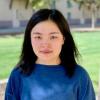
Yibei Chen is a graduate student in the Department of Communication at the UC Santa Barbara, and a researcher in the Media Neuroscience Lab. She is interested in all kinds of computational methods and combining those with neuroscience research. Currently, she works on how latent moral content predicts real-world behaviors and whether moral values could be used to predict communities in a network. Image

René Weber (Ph.D. Psychology, University of Technology Berlin, Germany; M.D.. Medicine, RWTH University Aachen, Germany) is a Professor in the Department of Communication, UC Santa Barbara, and the Director of the department’s Media Neuroscience Lab. At UC Santa Barbara. His lab investigates complex cognitive responses to mass communication and mediated narratives with an emphasis on the neural mechanisms of moral conflict, persuasion, media violence, cognitive control, and flow experiences. Current projects focus on the relationships between media-multitasking and attention disorders (ADHD) and on the analysis of moral narratives and moral conflict in global news and entertainment. He was the first communication scholar to regularly use fMRI to investigate various media effects, from the impact of violence in video games to the effectiveness of anti-drug PSAs. He has published four books and more than 140 journal articles and book chapters (March, 2021). His research has been supported by grants from national scientific foundations in the United States and Germany, as well as through private philanthropies and industry contracts. He is a Fellow of the International Communication Association. |
|
5:00-6:15 Organizations |
|
Communication challenges of reporting on COVID-19 in New York City Justine will describe some of the communication challenges she and other journalists face reporting on Covid-19 in America's largest city. These include keeping coverage engaging, spreading information instead of panic during dramatic situations (giant freezer trucks used as make-shift morgues, mass burials on a nearby island, months-long toilet paper shortages) and staying safe as a field reporter. Particularly challenging has been the constant effort to discern what the actual facts are from officials at many levels of government. The simplest example is that New York City and New York State calculate daily infection data differently so their numbers never align and often offer very different pictures about what's happening. They have given conflicting dates for vaccine eligibility for different groups, and a long-running feud between the mayor and governor doesn't help. In New York City, it seems that no greater pressure has been put on officials than from the restaurant industry and teachers' union. Because of this, the state has flip-flopped many times in their messaging about dining and school restrictions, causing mass protests, petitions and widespread anger. The quest to accurately and meaningfully convey what is happening continues as Justine reports on the vaccine rollout and the continued effects of the pandemic on restaurants, schools and every other aspect of life. Image

Justine Miller (B.A. Communication, UC Santa Barbara; M.S. Journalism, Columbia University) is an Associated Press-award-winning journalist who has covered stories from the streets of the Bronx to the waterways of Myanmar. The native-Californian is currently a TV reporter for News 12 in New York City. She reports on politics, criminal justice, education, healthcare and the community. She is also the co-owner of Jetset Journalists, producing video stories from Varanasi, India to Lalibela, Ethiopia. Justine has lived in Paris, Bangkok and Moscow and is halfway done visiting every country in the world, telling stories along the way. She is an active member of the Communication Alumni Association. |
|
How mental health is associated with work disruption, change communication, identity threat, and work meaning after COVID-19 policies distinguish between essential and non-essential professions This study examines employee sensemaking processes when COVID-19 policies recategorize their professions into those who conduct essential or non-essential work. Respondents include 623 Dutch employees, about half categorized as essential and half as non-essential. These categorizations had a wide array of implications from work guarantees to insurance coverage. We investigate the extent to which these new distinctions and the quality of change communication about these changes trigger identity threats or affect the meaningfulness of work amidst a complex global crisis, consequently affecting the mental health of workers during the pandemic. Higher-quality organizational change communication reduces identity threat, while increasing meaningfulness of work, for both groups of workers. However, the disruptions increase identity threat for non-essential workers. In turn, identity threat decreases mental health while meaningfulness of work alleviates two of the mental health issues. Ronald E. Rice (see bio statement and photo above) Image

Ward van Zoonen (Ph.D., University of Amsterdam) is an Assistant Professor in the Amsterdam School of Communication Research at the University of Amsterdam where he is part of the Corporate Communication Department. Ward is also affiliated with the University of Jyväskylä, Finland, as post-doctoral researcher in the Department of Language and Communication. He is part of an international research group called communication and collaboration on digital platforms. Broadly, his academic research focuses on organizational communication. His research interests include the relationship between information and communication technology use and work outcomes. Specifically, his work explores how technological advancements shape and change the nature of work. This relates to how the implementation of technological innovations, including artificial intelligence, affects the nature of work and employees’ work experiences. Image

Claartje L. ter Hoeven is Full Professor at the Erasmus School of Social and Behavioural Sciences, Erasmus University, Rotterdam, The Netherlands. She is the scientific director and coordinator of the interdisciplinary research and master program “Organizational Dynamics in the Digital Society”. Professor ter Hoeven’s scholarly interests encompass organizational communication, digital technologies, occupational psychology, and employee well-being. Her current research and teaching focuses on how digital technologies reconfigure work for different people in different occupations. In 2020, she received an ERC (European Research Council) grant for the project ‘The Ghostworker’s Well-being: An Integrative Framework’ on the work conditions and well-being of crowdworkers in Europe. Together with the municipality of Rotterdam and colleagues from Public Administration and Organizational Psychology, she is involved in a collaboration labelled “Organizations in a Smart City”. |
|
Employee wellbeing during COVID-19: How companies communicate employee care during a pandemic In a time of uncertainty and change, it is essential that companies genuinely connect with and demonstrate care for employees. The emphasis for these activities is on how to approach, engage and learn with employees. Jamie will share examples from two different companies of effective employee messaging and support and discuss how they have been received by employees. From her time at Microsoft, she will illustrate a structured team conversation model designed to for managers to help teams share experiences and support one another. In her current role at Cruise, she will describe the implementation of "Cruise COVID Rest Days" as a way for employees to recharge and step-away from work. Image

Jamie Morgan (B.A. Communication, UC Santa Barbara; M.A. Organizational Management). She has been working in talent acquisition for 20 years and specializes in building teams and in candidate generation strategy. Her background in recruiting for technology and infrastructure roles spans both Fortune 100 companies, as well as small organizations. Jamie was recently the Director or Sourcing Channels Strategy for Microsoft. In this role, she drove Microsoft's global talent sourcing strategy to optimize candidate generation efforts and she lead a global team that delivered market insights and intelligence, diversity programs, storytelling strategy, channel performance, and HCM innovation. Currently she is Head of Technical Recruiting at Cruise. She maintains that the best outcomes derive from a human, unguarded approach; and that doing the right thing, over the easy thing, is in the best interest of all parties. While at UCSB, Jamie served as Panhellenic President, Rush Chair for Alpha Chi Omega, and Patient Advocate for the Student Health Center. She resides in Northern California with her husband (also a UCSB grad), her two kids, and a spoiled dog. Her whole family enjoys travel, new restaurants and spending time on their boat. She is an active member of the Communication Alumni Association. |
2019: The Secret Lives of Plastic: Materials, Recycling, Oceans, & Communication

Corwin Pavilion
Tuesday April 30, 2:00 – 5:15 and 7:00 - 9:00 (4 sessions)
Free; with refreshments
Conference Themes
More and more people are becoming aware of plastics gyres and microplastics in the oceans, cities around the world are banning plastic bags and straws, and China has stopped accepting most of the world’s plastic for recycling. Scientists, policy-makers, municipalities, industries, and countries are struggling with the positive and negative implications of plastic. Topics include interdependencies and challenges in the life cycle of plastics, from design of materials, to uses, down- and up-recycling, energy and cost trade-offs, to pollution and ocean microplastics, sustainability, and communicating the issues. This event brings together experts from universities (administrators, science/social science/humanities professors), government, non-profit agencies, and industry, and presents a fascinating and troubling film, to discuss a variety of timely questions.
The first two sessions focus on the world-class expertise in chemical engineering and sustainable chemistry, environmental studies and policy, and environmental communication, at UC Santa Barbara and in the Santa Barbara city and county.
The evening session begins with an overview of the current issues, changes, lifecycle, and challenges involving plastic recycling, and a local high school project measuring microplastics. The movie is about the implications of plastic for the ocean, given the major emphasis on marine science at UCSB and the concern about ocean sustainability in the area and indeed the world. Recent reports and cutting-edge research explore the diffusion of plastics into and out of ocean gyres, the breakdown of plastics into microplastics in the water, the rise of the plastisphere as a new ocean ecology, the role of microplastics in spreading toxic chemicals and invasive species, the vast amount of plastic material that is dispersed into microparticles in the seabed and oceans, all with pervasive and long-term consequences for marine life as well as humans.
The website provides a diverse array of resources and participant video interviews. During the conference, and in the videos, participants will discuss their thoughts on the following questions:
- What are advantages and disadvantages of plastic?
- How are plastic and its alternatives designed, made, used, re-used, trashed, burned, recycled, and spread throughout the earth and oceans?
- What do biodegradable, compostable, and sustainable actually mean?
- How should we make economic and environmental tradeoffs between paper and plastic?
- What are local agencies and industries doing about plastic recycling?
- What should the general public know about plastic recycling?
- How do, and should, we communicate about plastics and recycling?
- What are scientific developments and innovations in plastic and alternative materials?
- What are important legal and policy initiatives and challenges in managing plastics?
Faculty can offer extra credit for attendance at any session; just provide sign-up rosters to Ron Rice
Click on the poster to download a .pdf document.
Session 1: 2:00-3:15
Welcome, introduction, short video, presentations, audience Q&A
Mahdi Abu-Omar
Mellichamp Professor in Green Chemistry
Plastics from Nature for a Prosperous Future
Aaron McKinnon
Reseacher, University of Hamburg, Germany
Imke Hoppe
Professor, University of Hamburg, Germany
Responsibility Framing in Californian News Coverage of Marine Debris
Patricia Holden
Professor, Bren School of Environmental Science & Management
Director, UCSB Natural Reserve System
Synthetic Microfibers: Emissions, Pathways, and Fates
Carlyle A. Johnston
Project Leader, Resource Recovery & Waste Management Division
Public Works Department, County of Santa Barbara
China, Global Trade, and How They Impact Recycling in Santa Barbara
Session 2: 3:30-4:45
Introduction, short video, presentations, audience Q&A
Ronald E. Rice
Arthur N. Rupe Professor in the Social Effects of Mass Communication
Department of Communication
Plastic Recycling Communication Campaigns
Roland Geyer
Professor, Bren School of Environmental Science & Management
Production, Use, and Fate of All Plastics
Jessica Schmitt
Recycling and Compost Coordinator, Associated Students
Heather Perry
Sustainable Procurement Analyst, Purchasing
Tanner Dorrough
Outreach Coordinator, Associated Students Recycling
Managing Plastic at UCSB
Session 3: 4:45-5:15
Informal meeting of each presenter with interested students (undergrad and graduate); we will show a slide listing where each presenter will be in the audience seats.
Session 4: 7:00-9:00
Welcome, Introduction, keynote presentation, short video, movie, panel discussion, audience Q&A
Dylan de Thomas
Vice President of Industry Collaboration
The Recycling Partnership
What's Next for Plastics Recycling's Future Past?
Stacy Rebich-Hespanha
Flourish Strategy and Analytics
Donald Bren School of Environmental Science & Management
Save Our Seas News: Kids Taking Action against Microplastic Pollution
Oceans: The Mystery of the Missing Plastic
Director: Vincent Pérazio; Studio: Via Découvertes Films. 2016, 55 minutes
“99% of the plastic that should be floating in the oceans is missing. Even accounting for the plastic that washes up on beaches or is trapped in arctic ice, millions of tonnes has simply disappeared. As most plastic never deteriorates, it simply breaks down into smaller and smaller particles that are invisible to the human eye, what happens to this missing ocean plastic is a mystery. In this investigation, scientists embark in search of the micro-plastics. Small, mostly invisible, toxic, they are home to a new ecosystem: the plastisphere. But where are they? Ingested by organisms? Buried under the ocean floor? Degraded by bacteria? And what is the impact of them entering the food chain?” (Green Planet Films)
Organizers and Sponsors
Ronald E. Rice is the Arthur N. Rupe Professor in the Social Effects of Mass Communication, Department of Communication, with interests in environmental communication, among other topics.
Susannah Scott is Professor of Chemical Engineering, Professor of Chemistry and Biochemistry, Director of the Scott Laboratory, Mellichamp Cluster Chair in Sustainable Catalytic Processing, and Director of the Mellichamp Academic Initiative in Sustainability.
This event is a collaboration between, and funded by, The Arthur N. Rupe Biennual Conference and the Mellichamp Academic Initiative in Sustainability. We also gratefully acknowledge the support of the Associated Students Program Board and the UCSB Communication Association.


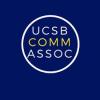
2017: Science, Communication and Uncertainty
The 2017 Rupe Conference had two parts: An evening public presentation open to the public, and an afternoon workshop for on-campus faculty and graduate students.
2017: Science, Communication and Uncertainty: Evening Presentation
Ira Flatow
Are You Sure? Science, Communication and Uncertainty

Campbell Hall, UC Santa Barbara Campus
Thursday, May 4th, 2017
7:30 – 9:00 pm
Free
Most people do not understand the process of science or what scientists do. They expect science to provide them with black and white solutions when in fact science many times comes up with appear to be ambiguous answers: uncertainty. But this is well-informed uncertainty, often accurate within likely ranges. This disconnect leads to many false assumptions about what to expect from science and scientists. And it makes it difficult for the media to communicate that uncertainty to a public that expects science to "know everything." On top of that challenge, religious and political factors also influence the public's understanding of science. In his presentation, Ira Flatow will explore these challenges and efforts to explain the uncertainty that scientists welcome but the public finds bewildering. The presentation will be followed by a Q&A session from the audience. Download .pdf poster here:
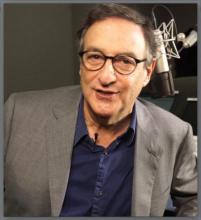
Award winning science correspondent and TV journalist Ira Flatow is the host of Science Friday®, heard weekly on PRI, Public Radio International, and online. He anchors the show each Friday, bringing radio and Internet listeners worldwide a lively, informative discussion on science, technology, health, space and the environment. Ira is also founder and president of Science Friday Initiative, a 501 (c)(3) non-profit company dedicated to creating radio, TV and Internet projects that make science “user friendly.” Flatow's interest in things scientific began in boyhood — he almost burned down his mother's bathroom trying to recreate a biology class experiment. “I was the proverbial kid who spent hours in the basement experimenting with electronic gizmos, and then entering them in high school science fairs,” Flatow says.
Mixing his passion for science with a tendency toward being a bit of a ham, Flatow describes his work as the challenge “to make science and technology a topic for discussion around the dinner table.” He has shared that enthusiasm with public radio listeners for more than 35 years. As a reporter and then News Director at WBFO-FM/Buffalo, New York, Flatow began reporting at the station while studying for his engineering degree at State University of New York in Buffalo. As NPR's science correspondent from 1971 to 1986, Flatow found himself reporting from the Kennedy Space Center, Three Mile Island, Antarctica and the South Pole. In one memorable NPR report, Flatow took former All Things Considered host Susan Stamberg into a closet to crunch Wint-O-Green Lifesavers, proving they spark in the dark. His most recent book is entitled Present at the Future: From Evolution to Nanotechnology, Candid and Controversial Conversations on Science and Nature (HarperCollins).
On television, Flatow has discussed the latest cutting edge science stories on a variety of programs. He also hosted the four-part PBS series Big Ideas produced by WNET in New York. His numerous TV credits include six years as host and writer for the Emmy-award-winning Newton's Apple on PBS, science reporter for CBS This Morning, and cable's CNBC. He wrote, produced and hosted Transistorized!, an hour-long documentary about the history of the transistor, which aired on PBS. He has talked science on many TV talk shows including Merv Griffin, Today, Charlie Rose, and Oprah. He has co-starred twice on the CBS hit series The Big Bang Theory.
On the Internet, Flatow has hosted numerous science related Web Casts for Discovery Online, The Great Planet Debate and the American Museum of Natural History in New York. His Podcasts are among the most listened to on the Internet, frequently in the top-ten of all downloads on the iTunes web site. His SciFri Twitter audience numbers more than 440,000, the biggest in all of Public Radio talk/shows. In print, Ira has authored articles for various magazines ranging from Woman's Day to ESPN Magazine to American Lawyer. His commentary has appeared in The Los Angeles Times, and Current newspapers.
Public speaking and moderating discussions are a regular part of his schedule. He has spoken at Rockefeller University, the World Economic Forum, Sun Microsystems, Hewlett Packard, Calvin Academy, Cal Tech, MIT, Harvard, University of Wisconsin, OSHU, National Inventor’s Hall of Fame and the Kentucky Author Forum. In 2004, Ira was resident scholar at Woods Hole Oceanographic Institute. His recent honors include: the Isaac Asimov Award (2012), the Nierenberg Prize (2010), Connecticut Academy of Science and Engineering membership (2008), National Science Teachers Association Faraday Science Communicator Award (2007), the National Science Board Public Service Award (2005), World Economic Forum Media Fellowship (2005), AAAS Journalism award (2000), Brady Washburn Award (2000), and the Carl Sagan Award (1999).
Ira is member of the National Association of Science Writers, AFTRA and Screen Actors Guild. His hobbies include tennis, golf, gardening (especially orchids), and electronic gadgets. He loves the theater. A native of New York, Flatow now lives in Connecticut.
2017: Science, Communication and Uncertainty: Afternoon Workshop
UCen State Street Room, UC Santa Barbara Campus
Thursday, May 4th, 2017
2:00 – 4:45 pm
A central issue in the practice and communication of science is what scientific uncertainty means, and how that term and the content shape both scientific and public discourse. For example, often media coverage notes or mentions uncertainty without clarifying whether it's general uncertainty (due to deficient knowledge) or scientific uncertainty (which is based on considerable information; we can state the boundaries of the estimates, or have a lot of knowledge about the conditions under which things happen). Then it's easy for people prone to either discount or be confused by science to say, well the scientists don't really know, so it isn't really happening (climate change, sea level rise, vaccinations, etc.). But, scientists also deal with, measure and estimate, and communicate about various forms and sources of uncertainty. One paradigm of science is that we can never truly know, we can only try to reject explanations; those concepts and relationships that hold up well to attempts at falsification continue on as consensus knowledge. Other paradigms approach uncertainty in different ways.
The workshop will be interdisciplinary, with invited participants from the physical sciences, social sciences, and humanities. Short presentations and longer discussions will identify implications of the concept of uncertainty for communicating science to the public, understanding the public’s attitudes toward science, teaching science, and influencing policy. Presentations may include the scientific and common meanings and implications of uncertainty; uncertainty reduction in interpersonal communication; the portrayal of science and uncertainty in news stories and visuals; how the public processes error and uncertainty about science; uncertainty in scientific research; and related topics. We encourage examples related to sustainability and the environment, but that is not required. Discussions will generate a small number of substantive foci and questions for future research and public policy, and for posing to Ira Flatow, the NPR science communicator, after his presentation on Science, Communication, and Uncertainty at Campbell Hall at 7:30 that evening.
Any UC Santa Barbara faculty member or graduate student may attend, but please register here. (Registration now closed). If you also wish to be a presenter, please enter a 300-word abstract on the registration page. Full papers are not required, and there will be no proceedings, but participants will be expected to make a short presentation and engage in the discussions. The Workshop will provide presenters a buffet dinner from 5:00 to 6:45. All participants are encouraged to also attend the evening presentation.
Click here for a .pdf of the following program: Click here for a .pdf of the summary "takeaways" from the workshop discussions.
Session 1: 2:00 – 3:15pm
Presentations: 40 min
“Responding to Fake News” Doug Bradley, Continuing Lecturer, Writing Program
“Simplicity vs. Scientific Correctness: A Dilemma of Uncertainty” Sangwon Suh, Professor, Bren School of Environmental Science & Management
“Communication Gap: How Science Can Do A Better Job Communicating” Michael Hanrahan, Lecturer & Filmmaker, Department of Film & Media Studies, Carsey-Wolf Center, and the Bren School of Environmental Science & Management
“A Discussion of Lewis Carrol’s 58th Pillow Problem” Kenneth Millett, Emeritus Professor, Department of Mathematics
Breakout Sessions & Group Discussion: 35 min
Break: 3:15-3:30pm
Session 2: 3:30 – 4:45pm
Presentations: 30 min
“Confidence in Uncertainty: A Science Editor's Story” Susannah Scott, Mellichamp Professor of Sustainable Catalytic Processing, Department of Chemical Engineering, Department of Chemistry & Biochemistry
“The Exact Sciences Aren’t” Mattanjah de Vries, Professor, Department of Chemistry and Biochemistry
“Uncertainty and Opinion Divergence in Climate Change Journalism” Ronald E. Rice, Arthur N. Rupe Chair in the Social Effects of Mass Communication, Department of Communication & Abel Gustafson, Doctoral candidate, Department of Communication
Breakout Sessions & Group Discussion: 30 min
2017: Science, Communication and Uncertainty: Sponsors
The interdisciplinary, cross-campus event is part of a series on Sustainable Science Communication, by the Mellichamp Academic Initiative in Sustainability, and the Department of Communication’s biennual Rupe Conference series. It is co-sponsored by the Bren School for Environmental Science & Management's Strategic Communication & Environmental Media focus, and the Associated Students Program Board, and is assisted by Arts & Lectures.






2015: International Communication Association's Environmental Communication Division Post-conference on Climate and Sustainability Campaigns
Tuesday, May 26, 2015 Caribe Hilton, San Juan, Puerto Rico.
Sponsored by the Environmental Communication Division, Health Communication Division, Political Communication Division. Funded by the Rupe Chair in the Social Effects of Mass Communication, Department of Communication, University of California, Santa Barbara.
Anthropogenic climate change has now come of age as a widely recognized global risk and a profound peril to the health and wellbeing of human and nonhumans alike (Maibach, Roser-Renouf & Leiserowitz, 2008). It demands global responses and actions to reduce its threats (Beck, 2010). According to one recent analysis, climate legislation is unlikely without a large, well-orchestrated and sustained climate movement and climate action (Skocpol 2013). The aim of this post-conference is to help shift research on climate communication from its early focus on media coverage of climate change to mapping and understanding the global terrain of climate and sustainability campaigns waged by diverse actors across the world, and targeting various audiences. This post-conference sought to improve our understanding of campaign types, scope, organizational nature and actors, topics, goals, strategies, tactics, capacities, effects, audience psychology, and similar relevant issues.
8:30 – 8:45 Greetings
8:45 – 9:15 Keynote
9:15 – 10:45 Session 1: Source and Channel Factors in Climate Communication Campaigns
11:00 – 12:30 Session 2: Campaign Considerations and Message Strategies: Framing, Social Norm Activation and Visual Content
1:30 – 2:45 Session 3: Individual--level Factors and Environmental Behaviors and Beliefs
3:00 – 4:45 Session 4: Time and Place: Case Studies of Specific Climate Campaigns
4:45 – 5:00 Closing Remarks
For a detailed program (in Word format), including extended (5 pages) abstracts of the papers, see:
http://www.comm.ucsb.edu/faculty/rrice/ICA_Environmental_Communication_Post-Conference_2015.html
2015: Sustainable Science Communication Conference
Wednesday, May 13, 7pm - 9 pm, Pollock Theater: film Merchants of Doubt, with audience Q&A
Thursday, May 14, 9am - 5pm, Corwin Pavilion: 9:30am – 10:45am CONTENT; 11:00am – 12:15pm AUDIENCE; 12:30pm – 2:00pm Sustainability and Science Communication POSTERS; LUNCH AT THE UCEN; 2:00pm – 3:15pm MEDIA; 3:30pm – 4:45pm IMPACT
What are effective ways of communicating about sustainability and environmental science? The conference and discussions will cover approaches from academic research, community organizations, and professional science communicators. For conference details see http://www.comm.ucsb.edu/news/event/685.
For edited videos of the 4 sessions, see http://www.uctv.tv/shows/29770, http://www.uctv.tv/shows/29771, http://www.uctv.tv/shows/29772, and http://www.uctv.tv/shows/29902.
2013: Rupe/Figuring Sea Level Rise Conference: Risk and Uncertainty and the Communication of Sea Level Rise
Friday, April 12, 9:00am - 5:00pm, Corwin Pavilion
This conference is the culminating event of the Figuring Sea Level Rise/Critical Issues in America series. Participants will discuss the human dimensions of risks and concerns of affected communities, and the challenges of using indigenous, mass media, and online media for communicating about Sea Level Rise. Click here for videos of sessions.
2011: Net Worth: Media Distribution in the Digital Era
Friday, February 18, 9:30am - 4:30pm, Pollock Theater

Jointly presented by the Carsey-Wolf Center’s Media Industries Project and the Arthur N. Rupe Chair in the Social Effects of Mass Communication, this free one-day conference brought together scholars, critics, and industry practitioners to stimulate fresh research on distribution. It explored diverse aspects of the digital distribution revolution including corporate practices, creative labor, intellectual property, and new technologies.

Media delivery options have expanded considerably during the digital era. College students now watch TV and movies on laptops, while many of their parents ditch the cable box for a home theater PC. Some people pay for their media as monthly utilities, while others graze across a vast landscape of electronic offerings, selecting their choices a la carte. With each passing year, more people watch what they want, when they want, and increasingly, where they want. All of this adds up to a revolution in media distribution, affecting every aspect of commercial popular culture, from industry practices to audience consumption and re-use. Yet, strikingly, media scholarship pays far less attention to distribution than any other aspect of popular media.
2009: Media and the Presidential Election: Humor, Race, and Coverage

During 2009, the Department of Communication at the University of California Santa Barbara celebrated its 25th anniversary through three major events. One of the year’s events was the bi-annual Rupe Conference, co-sponsored and co-organized by the Carsey-Wolf Center, on Thursday, March 5, 2:00pm - 9:30pm, Corwin Pavilion.
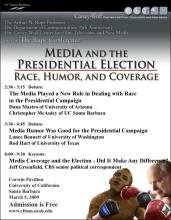
2:00 - 3:15 First Debate (video):
The Media Played a New Role in Dealing with Race in the Presidential Campaign
Dana Mastro, U. Arizona & Christopher McAuley, UC Santa Barbara
3:30 - 4:45 Second Debate (video):
Media Humor was Good for the Presidential Campaign
Lance Bennett, U. Washington & Rod Hart, U. Texas
8:00 - 9:30 Keynote Address (video):
An Analysis of Media Coverage: Did it Make Any Difference?
Jeff Greenfield, CBS Senior Political Correspondent
2007: Media and the Environment
Saturday, April 28, 12:00pm - 6:00pm, Corwin Pavilion
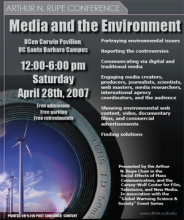
This multi-media event, co-sponsored and co-organized by the Carsey-Wolf Center, brought together media creators and producers, journalists, scientists, web masters, media researchers, international agency coordinators, and the audience. The sessions showed a wide variety of environmental media content, including web video, documentary films, and commercial advertisements. The presentations and discussions explored the technological, economic, political, and social challenges involved in creating environmental media content for traditional and new media outlets, and for improving public understanding and action concerning the environment.
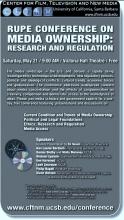
2005: Rupe Conference on Media Ownership: Research and Regulation
Saturday, May 21, 9:00pm - 5:00pm, Victoria Hall Theatre, Santa Barbara
Media Ownership: Research and Regulation was a year-long series of events examining the changing patterns of media ownership, their implications on civic practice, and the regulatory structures that govern them. It was supported by a UCSB Critical Issues in America grant, and co-sponsored and co-organized by the Carsey-Wolf Center.
The series culminated in the 2005 Rupe Conference on Media Ownership, and over the 9 months engaged more than 50 faculty members from 20 different departments.
For more information, explore the 18-chapter 2008 edited book Media Ownership: Research and Regulation that includes full chapter versions of many of the presentations from the series and conference, as well as other chapters on aspects of Media Regulation and Ownership.